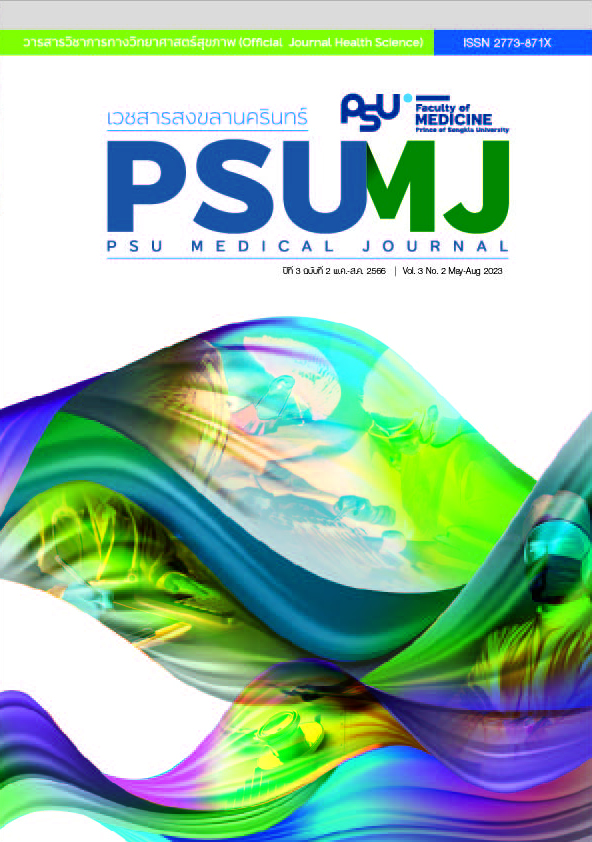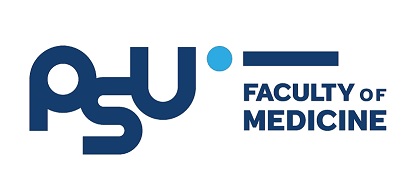Azoospermia: Review of Causes, Diagnostic Approach, and Management
Approach and Management in Azoospermia
DOI:
https://doi.org/10.31584/psumj.2023259487Keywords:
azoospermia, cause, male infertility, managementAbstract
Azoospermia is a significant cause of male infertility, which has been reported between 10–15% of males with the problem. As usual, the causes of azoospermia include abnormal spermatogenesis, hypothalamic and pituitary gland disorders, and abnormal sperm motility. The most common contributing factors to abnormal testicular spermatogenesis are genetic causes, particularly Klinefelter syndrome. Kallmann syndrome is the cause of hypothalamic and pituitary disorders and is associated with anosmia. In those with abnormal sperm motility, 4-25% of azoospermia have congenital bilateral absence of the vas deferens. After history-taking and physical examination, the basic endocrine serum testosterone (T), luteinizing hormone (LH), and follicle-stimulating hormone (FSH) are the results. High or low FSH and low T are suggested for non-obstructive azoospermia (NOA), while normal FSH and T are for obstructive azoospermia (OA). In NOA, the management depends on the causes of azoospermia. Testicular failure such as Klinefelter syndrome is managed using sperm donors. Hypothalamic and pituitary disorders may be treated with pulsatile Gonadotropin releasing hormone, gonadotropin treatment, estrogen antagonists, and aromatase inhibitors. Whilst OA, the principal management options are sperm retrieval surgery such as percutaneous epididymal sperm aspiration, microsurgical epididymal sperm aspiration, and testicular sperm aspiration.
References
Cytogenetic survey of subfertile males in Japan. Urol Int 1989;44:194-7.
Stouffs K, Lissens W, Seneca S. Severe male factor infertility. In: Gardner DK, Weissman A, Howles CM, Shoham Z, editors. Textbook of assisted reproductive techniques. 5th ed. Boca Raton: Taylor & Francis Group; 2018;p.326-38.
Lanfranco F, Kamischke A, Zitzmann M, Nieschlag E. Kline felter’s syndrome. Lancet 2004;364:273-83.
Bhasin S, Cunningham GR, Hayes FJ, Matsumoto AM, Snyder PJ, Swerdloff RS, et al. Testosterone therapy in men with androgen deficiency syndromes: an Endocrine Society clinical practice guideline. J Clin Endocrinol Metab 2021;106:e2848.
Colpi GM, Francavilla S, Haidl G, Link K, Behre HM, Goulis DG, et al. European Academy of Andrology guideline management of oligo-astheno-teratozoospermia. Andrology 2018;6:513-24.
Colaco S, Modi D. Genetics of the human Y chromosome and its association with male infertility. Reprod Biol Endo-crinol 2018;16:14.
Grasso M, Buonaguidi A, Lania C, Bergamaschi F, Castelli M, Rigatti P. Postpubertal cryptorchidism: review and eval-uation of the fertility. Eur Urol 1991;20:126-8.
Olesen IA, Andersson AM, Aksglaede L, Skakkebaek NE, Rajpert-de Meyts E, Joergensen N, et al. Clinical, genetic, biochemical, and testicular biopsy findings among 1,213 men evaluated for infertility. Fertil Steril 2017;107:74-82.e7.
Punab M, Poolamets O, Paju P, Vihljajev V, Pomm K, Lad va R, et al. Causes of male infertility: a 9-year prospective monocentre study on 1737 patients with reduced total sperm counts. Hum Reprod 2017;32:18-31.
Jensen CFS, Østergren P, Dupree JM, Ohl DA, Sønksen J, Fode M. Varicocele and male infertility. Nat Rev Urol 2017; 14:523-33.
Nork JJ, Berger JH, Crain DS, Christman MS. Youth vari- cocele and varicocele treatment: a meta-analysis of semen outcomes. Fertil Steril 2014;102:381-7.e6.
Wu H, Wang F, Tang D, Han D. Mumps orchitis: clinical aspects and mechanisms. Front Immunol 2021;12:582946.
Stamou MI, Georgopoulos NA. Kallmann syndrome: pheno-type and genotype of hypogonadotropic hypogonadism. Metabolism 2018;86:124-34.
Ambulkar SS, Darves-Bornoz AL, Fantus RJ, Wren J, Ben nett NE, Halpern JA, et al. Prevalence of hyperprolac tinemia and clinically apparent prolactinomas in men under going fertility evaluation. Urology 2022; 159: 114-9.
Fedder J, Jørgensen MW, Engvad B. Prevalence of CBAVD in azoospermic men carrying pathogenic CFTR mutations - evaluated in a cohort of 639 non-vasectomized azoosper-mic men. Andrology 2021; 9(2): 588-98.
Bryan ER, McLachlan RI, Rombauts L, Katz DJ, Yazdani A, Bogoevski K, et al. Detection of chlamydia infection within human testicular biopsies. Hum Reprod 2019;34:1891-8.
Han H, Liu S, Zhou XG, Tian L, Zhang XD. Aetiology of obstructive azoospermia in Chinese infertility patients. Andrologi 2016;48:761-4.
Turek PJ, Magana JO, Lipshultz LI. Semen parameters before and after transurethral surgery for ejaculatory duct obstruction. J Urol. 1996;155:1291-3.
Smith JF, Walsh TJ, Turek PJ. Ejaculatory duct obstruction. Urol Clin North Am 2008;35:221-7.
Barthwal MS. Kartagener’s syndrome in a fertile male - An uncommon variant. Lung India 2006;23:123–5.
Bohlen JG, Held JP, Sanderson MO. The male orgasm: pelvic contractions measured by anal probe. Arch Sex Be hav. 1980;9:503-21.
World Health Organization. WHO laboratory manual for the examination and processing of human semen, sixth edition. Geneva: World Health Organization; 2021. Licence: CC BY-NC-SA 3.0 IGO.
Simon L, Zini A, Dyachenko A, Ciampi A, Carrell DT. A systematic review and meta-analysis to determine the effect of sperm DNA damage on in vitro fertilization and intracytoplasmic sperm injection outcome. Asian J Androl 2017;19:80-90.
Hayden RP, Li PS, Goldstein M. Microsurgical vasectomy reversal: contemporary techniques, intraoperative decision making, and surgical training for the next generation. Fertil Steril 2019;111:444-53.
Cocuzza M, Athayde KS, Alvarenga C, Srougi M, Hallak J. Grade 3 varicocele in fertile men: a different entity. J Urol 2012;187:1363-8.
Aribarg A, Kenkeerati W, Vorapaiboonsak V, Leep-ipatpaiboon S, Farley TM. Testicular volume, semen profile and serum hormone levels in fertile Thai males. Int J Androl 1986;9:170-80.
Boeri L, Capogrosso P, Ventimiglia E, Cazzaniga W, Pozzi E, Belladelli F, et al. Testicular volume in infertile versus fertile white-European men: a case-control investigation in the real-life setting. Asian J Androl 2021;23:501-9.
Cocuzza M, Alvarenga C, Pagani R. The epidemiology and etiology of azoospermia. Clinics (Sao Paulo) 2013;68(Suppl 1): 15-26.
Jarvi K, Lo K, Fischer A, Grantmyre J, Zini A, Chow V, et al. CUA Guideline: The workup of azoospermic males. Can Urol Assoc J 2010;4:163-7.
Jarvi K, McCallum S, Zielenski J, Durie P, Tullis E, Wilchanski M, et al. Heterogeneity of reproductive tract abnormalities in men with absence of the vas deferens: role of cystic fibrosis transmembrane conductance regulator gene mutations. Fertil Steril 1998;70:724-8.
Rastrelli G, Corona G, Mannucci E, Maggi M. Factors affecting spermatogenesis upon gonadotropin-replacement therapy: a meta-analytic study. Andrology 2014;2:794-808.
Practice Committee of the American Society for Reproductive Medicine. Management of nonobstructive azoospermia: a committee opinion. Fertil Steril 2018; 110(7): 1239-45.
Attia AM, Abou-Setta AM, Al-Inany HG. Gonadotrophins for idiopathic male factor subfertility. Cochrane Database Syst Rev 2013;CD005071.
Chua ME, Escusa KG, Luna S, Tapia LC, Dofitas B, Morales M. Revisiting oestrogen antagonists (clomiphene or tamoxifen) as medical empiric therapy for idiopathic male infertility: a meta-analysis. Andrology 2013;1:749-57.
Del Giudice F, Busetto GM, De Berardinis E, Sperduti I, Ferro M, Maggi M, et al. A systematic review and meta-analysis of clinical trials implementing aromatase inhibitors to treat male infertility. Asian J Androl 2020;22:360-7.
Hussein A, Ozgok Y, Ross L, Rao P, Niederberger C. Opti mization of spermatogenesis-regulating hormones in patients with non-obstructive azoospermia and its impact on sperm retrieval: a multicentre study. BJU Int 2013;111:E110-4.
Esteves SC, Miyaoka R, Roque M, Agarwal A. Outcome of varicocele repair in men with nonobstructive azoospermia:
systematic review and meta-analysis. Asian J Androl 2016; 18:246-53.
Bernie AM, Mata DA, Ramasamy R, Schlegel PN. Comparison of microdissection testicular sperm extraction, conventional testicular sperm extraction, and testicular sperm aspiration for nonobstructive azoospermia: a systematic review and meta-analysis. Fertil Steril 2015;104:1099-103.e1033.
Alkandari MH, Bouhadana D, Zini A. Is a contralateral testicular exploration required at microdissection testicular sperm extraction for men with nonobstructive azoospermia, cryptozoospermia or severe oligozoospermia? Andrologia 2021;53:e14208.
Eliveld J, van Wely M, Meißner A, Repping S, van der Veen F, van Pelt AMM. The risk of TESE-induced hypo gonadism: a systematic review and meta-analysis. Hum Reprod Update 2018;24:442-54.
Ohlander S, Hotaling J, Kirshenbaum E, Niederberger C, Eisenberg ML. Impact of fresh versus cryopreserved tes-ticular sperm upon intracytoplasmic sperm injection preg-nancy outcomes in men with azoospermia due to spermato-genic dysfunction: a meta-analysis. Fertil Steril 2014;101: 344-9.
Practice Committee of the American Society for Reproduc-tive Medicine in collaboration with the Society for Male Reproduction and Urology. The management of obstructive azoospermia: a committee opinion. Fertil Steril 2019;111: 873-80.
Practice Committee of American Society for Reproductive Medicine. Vasectomy reversal. Fertil Steril 2008;90(5 Suppl):S78-82.
Practice Committee of American Society for Reproductive Medicine. Sperm retrieval for obstructive azoospermia. Fertil Steril 2008;90(5 Suppl):S213-8.
Palermo GD, Schlegel PN, Hariprashad JJ, Ergün B, Mielnik A, Zaninovic N, et al. Fertilization and pregnancy outcome with intracytoplasmic sperm injection for azoospermic men. Hum Reprod 1999;14:741-8.
Jefferys A, Siassakos D, Wardle P. The management of retrograde ejaculation: a systematic review and update. Fertil Steril 2012;97:306-12.
Mou L, Gui Y. A novel variant of androgen receptor is associated with idiopathic azoospermia. Mol Med Rep 2016;14:2915-20.
Cito G, Coccia ME, Sessa F, Cocci A, Verrienti P, Picone R, et al. Testicular Fine-Needle Aspiration for Sperm Retrieval in Azoospermia: A Small Step toward the Technical Stan-dardization. World J Mens Health 2019;37:55-67.
Deruyver Y, Vanderschueren D, Van der Aa F. Outcome of microdissection TESE compared with conventional TESE in non-obstructive azoospermia: a systematic review. Andrology 2014;2:20-4.
Donoso P, Tournaye H, Devroey P. Which is the best sperm retrieval technique for non-obstructive azoospermia? A systematic review. Hum Reprod Update 2007;13: 539- 49.
Amer M, Ateyah A, Hany R, Zohdy W. Prospective com-parative study between microsurgical and conventional tes-ticular sperm extraction in non-obstructive azoospermia: follow-up by serial ultrasound examinations. Hum Reprod 2000;15:653-6.
Achermann APP, Pereira TA, Esteves SC. Microdissection testicular sperm extraction (micro-TESE) in men with infertility due to nonobstructive azoospermia: summary of current literature. Int Urol Nephrol 2021;53:2193-210.
Ramasamy R, Yagan N, Schlegel PN. Structural and func-tional changes to the testis after conventional versus mi crodissection testicular sperm extraction. Urology 2005; 65:1190-4.
Glina S, Fragoso JB, Martins FG, Soares JB, Galuppo AG, Wonchockier R. Percutaneous epididymal sperm aspiration (PESA) in men with obstructive azoospermia. Int Braz J Urol 2003;29:141-6.
Esteves SC, Lee W, Benjamin DJ, Seol B, Verza S Jr, Agarwal A. Reproductive potential of men with obstructive azoospermia undergoing percutaneous sperm retrieval and intracytoplasmic sperm injection according to the cause of obstruction. J Urol 2013;189:232-7.
Hao L, Li ZG, He HG, Zhang ZG, Zhang JJ, Dong Y, et al. Application of percutaneous epididymal sperm aspiration in azoospermia. Eur Rev Med Pharmacol Sci 2017;21:1032-5.
Bernie AM, Ramasamy R, Stember DS, Stahl PJ. Microsur-gical epididymal sperm aspiration: indications, techniques and outcomes. Asian J Androl 2013;15:40-3.
Oates R. Evaluation of the azoospermic male. Asian J Androl 2012;14:82-7.
Bhasin S. Approach to the infertile man. J Clin Endocrinol Metab 2007;92:1995-2004.
Downloads
Published
How to Cite
Issue
Section
License
Copyright (c) 2023 Author and Journal

This work is licensed under a Creative Commons Attribution-NonCommercial-NoDerivatives 4.0 International License.








